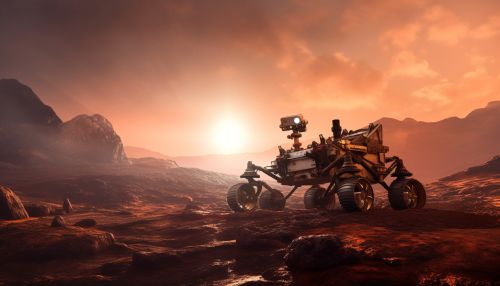Mars Rover
Introduction
The Mars Rover is a series of robotic vehicles that have been sent by NASA to the planet Mars. These rovers are part of NASA's Mars Exploration Program, a long-term effort of robotic exploration of the red planet. The program seeks to gather information about Mars' climate and geology, and to search for signs of past or present life.


Design and Development
The design and development of the Mars Rovers are a testament to human ingenuity and technological advancement. Each rover is designed to withstand the harsh conditions of Mars, including extreme temperatures, dust storms, and rocky terrain. They are equipped with a variety of scientific instruments to carry out their mission objectives.
The development process involves a team of engineers and scientists from NASA's Jet Propulsion Laboratory (JPL). The team works together to design, build, and test each rover before it is launched to Mars. The process can take several years, and involves rigorous testing to ensure the rover can survive the journey to Mars and operate effectively once it arrives.
Mars Rover Missions
Sojourner
The first successful Mars Rover mission was Sojourner, which was part of the Mars Pathfinder mission in 1997. Sojourner was a small, six-wheeled vehicle that was designed to demonstrate the feasibility of low-cost landings on Mars. The rover operated for 83 Martian days (sols) and returned valuable data about the Martian surface.
Spirit and Opportunity
In 2003, NASA launched two Mars Rovers, Spirit and Opportunity, as part of the Mars Exploration Rover (MER) mission. Both rovers far exceeded their planned 90 sol missions, with Spirit operating until 2010 and Opportunity until 2018. These rovers made several important discoveries, including evidence of past water activity on Mars.
Curiosity
The Mars Science Laboratory mission, with its rover named Curiosity, launched in 2011 and is still operational as of 2021. Curiosity is equipped with a suite of advanced scientific instruments, and its mission is to investigate whether Mars could have ever supported microbial life. Among its many discoveries, Curiosity found evidence of an ancient Martian environment that could have supported microbial life.
Perseverance
The most recent Mars Rover, Perseverance, was launched in 2020 as part of the Mars 2020 mission. Perseverance's mission is to search for signs of ancient microbial life, and to collect samples of rock and regolith (broken rock and dust) for a possible return to Earth.
Scientific Discoveries
The Mars Rovers have made a number of important scientific discoveries that have greatly increased our understanding of Mars. These include evidence of past water activity, the discovery of various types of rocks and minerals, and the detection of methane in the Martian atmosphere. Each discovery brings us one step closer to answering the question of whether life ever existed on Mars.
Future Missions
NASA has plans for future Mars Rover missions as part of its ongoing Mars Exploration Program. These include the Mars Sample Return mission, which aims to return samples of Martian rock and soil to Earth for further analysis. The continued exploration of Mars by robotic rovers will undoubtedly lead to more exciting discoveries in the years to come.
